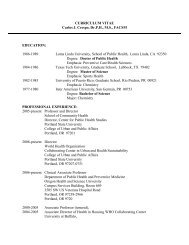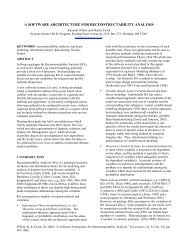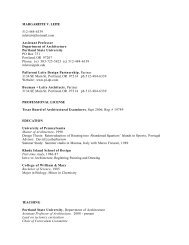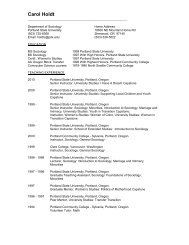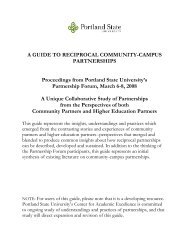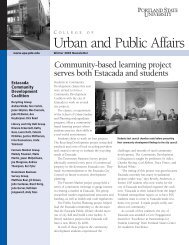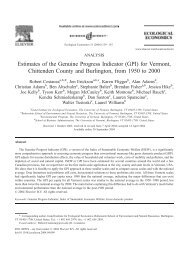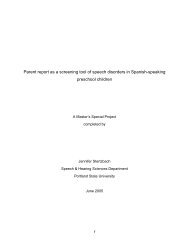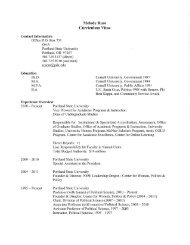Effects of integral stimulation therapy on speech - Portland State ...
Effects of integral stimulation therapy on speech - Portland State ...
Effects of integral stimulation therapy on speech - Portland State ...
Create successful ePaper yourself
Turn your PDF publications into a flip-book with our unique Google optimized e-Paper software.
practice his motor <strong>speech</strong> skills in a distributed and random fashi<strong>on</strong>, building <strong>on</strong> his<br />
ability to generalize his skills to everyday <strong>speech</strong> c<strong>on</strong>texts.<br />
In this study, 3 out <str<strong>on</strong>g>of</str<strong>on</strong>g> the 4 <strong>speech</strong> targets indicated stable retenti<strong>on</strong> <str<strong>on</strong>g>of</str<strong>on</strong>g> learned<br />
<strong>speech</strong> motor skills as indicated by retenti<strong>on</strong> <str<strong>on</strong>g>of</str<strong>on</strong>g> target sound accuracy 2 weeks following<br />
the end <str<strong>on</strong>g>of</str<strong>on</strong>g> treatment. Specifically, CP’s accuracy <str<strong>on</strong>g>of</str<strong>on</strong>g> s-cluster ph<strong>on</strong>emes /sp/, /sm/, /sn/,<br />
/st/, and /sw/ in carrier phrases rose from 0% accuracy during 4 baseline probes, to 100%<br />
and 80% accuracy in post treatment data probes. Ph<strong>on</strong>emes /f/ and /v/ accuracy increased<br />
from 0% and 40% correct during baseline probes to 80% and 100% correct in post<br />
treatment data probes. CP’s accuracy <str<strong>on</strong>g>of</str<strong>on</strong>g> affricate sounds /ȴ/ and /ȷ/ increased in<br />
accuracy from baselines <str<strong>on</strong>g>of</str<strong>on</strong>g> 0% and 60% accurate to post treatment results <str<strong>on</strong>g>of</str<strong>on</strong>g> 60% to<br />
100%. It should be noted that baseline data indicated a pattern <str<strong>on</strong>g>of</str<strong>on</strong>g> improved producti<strong>on</strong><br />
prior to treatment for this sound class /ȴ/ and /ȷ/. CP had been able to accurately produce<br />
/ȴ/ and /ȷ/ in some instances (in words and phrases) prior to treatment for these sounds.<br />
It is possible that CP’s increased self-m<strong>on</strong>itoring skills as well as work <strong>on</strong> other fricative<br />
word classes (/s/ clusters, and /f/, /v/) may have transferred to his motor <strong>speech</strong> skills<br />
during the treatment period. His baseline performance was stable (0 to 20% correct) over<br />
the first 9 baseline probes, then began to increase after /f/ & /v/ targets were introduced to<br />
treatment sessi<strong>on</strong>s.<br />
The fourth <strong>speech</strong> sound class (interdental fricatives /θ/ and /ð/) may have been<br />
introduced too late in the course <str<strong>on</strong>g>of</str<strong>on</strong>g> the treatment (sessi<strong>on</strong> # 26) to have acquired stable<br />
motor learning (generalizati<strong>on</strong>) following the cessati<strong>on</strong> <str<strong>on</strong>g>of</str<strong>on</strong>g> treatment. CP showed clear<br />
improvement in producti<strong>on</strong> <str<strong>on</strong>g>of</str<strong>on</strong>g> /θ/ and /ð/ sounds over the course <str<strong>on</strong>g>of</str<strong>on</strong>g> the treatment period.<br />
His accuracy for interdental sounds was c<strong>on</strong>sistently 0% over the 4 baseline data probes<br />
66



